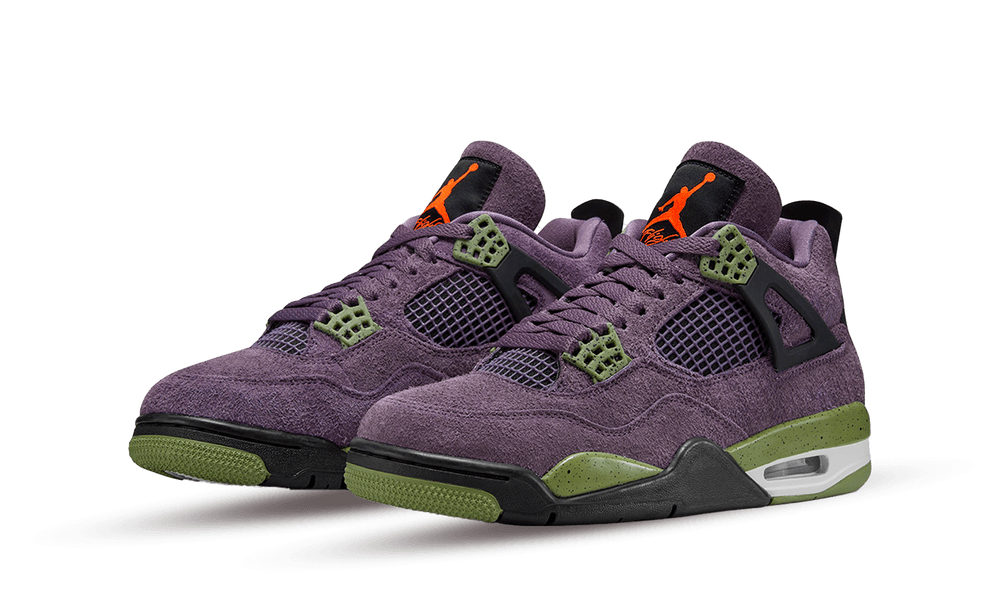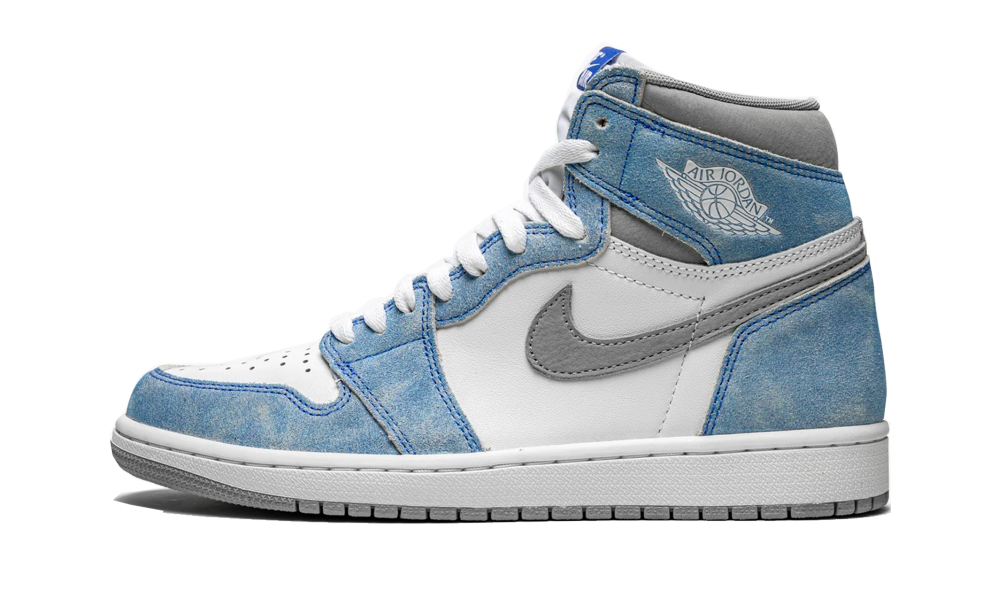Sneaker
jordan,yeezy,nike,adidas

A márka elsősorban a híres kosárlabdázó számára 2009-ig létrehozott 23 kosárlabdacipő-sorozathoz kapcsolódik. A játékos személyisége vagy szenvedélyei ihlette ezek a tornacipők mind a technika, mind a dizájn szempontjából a piacon a legavantgárdabbak akartak lenni .
A Jordan márkát 1997-ben hozták létre a Nike társasággal együttműködve . Michael Jordan személyesen vesz részt ebben a divízióban, amely őt képviseli. A Swoosh , amely a cég logója, már nem jelenik meg a Jordan márka termékein az Air Jordan VII-től (1992), csak a Jumpman (logó) jelenik meg ott: ez egy nagyon jövedelmező társulás kiterjesztése a kettő között 1984 óta partnerek.
Az Air Jordan (röviden Jordan, J vagy AJ) egy sportruházati márka, mely a Nike leányvállalata, a Jordan Company tulajdona. A márka legismertebb termékei az eredetileg Michael Jordan által viselt kosárlabdacipők, melyekből 1985 óta évente mutatnak be új modellt, azóta is, hogy Jordan már visszavonult. A cipők mellett kosárlabda- és szabadidő-ruházatot is forgalmaznak a márkanév alatt. A márka viszonylag drága, hazai tekintetben felsőkategóriásnak számít.
Sneakers (also called trainers, athletic shoes, tennis shoes, gym shoes, kicks, sport shoes, flats, running shoes, or runners) are shoes primarily designed for sports or other forms of physical exercise, but which are also widely used for everyday casual wear.
Since their popularization by companies such as Converse, Nike and Spalding in the mid 20th century, they have become attire, with variety growing in many global markets exponentially. Like other parts of the global clothing industry, manufacture of shoes is heavily concentrated in Asia with nine in ten shoes produced in that region.[1]
Contemporary sneakers are largely made from synthetic materials, and the materials and manufacturing process produce, on average, about 14 kg (31 lb) of CO2 emissions.[2][3] Some companies are trying to substitute more sustainable materials in their manufacture.[3] About 90% of shoes end up in landfills at end of life.[4]
The shoes have gone by a variety of names, depending on geography and changing over the decades. The term "sneakers" is most commonly used in Northeastern United States, Central and South Florida,[5][6] Australia,[7] New Zealand, and parts of Canada. However, in Australian, Canadian, and Scottish English, running shoes and runners are synonymous terms used to refer to sneakers; with the latter term also used in Hiberno-English. Tennis shoes is another term used in Australian, and North American English.
The British English equivalent of sneaker in its modern form is divided into two separate types - predominantly outdoor and fashionable trainers, training shoes or quality 'basketball shoes' and in contrast cheap rubber-soled, low cut and canvas-topped 'plimsolls'. In Geordie English, sneakers may also be called sandshoes, gym boots, or joggers;[8] while plimsolls may be referred to as daps in Welsh English.
Several terms for sneakers exist in South Africa, including gym shoes, sports shoes and takkies.[9] Other names for sneakers includes rubber shoes in Philippine English, track shoes in Singapore English, canvas shoes in Nigerian English, Camboo in Ghana English meaning Camp boot and sportex in Greece.
Plimsolls (British English) are "low-tech" athletic shoes and are also called "sneakers" in American English. The word "sneaker" is often attributed to American Henry Nelson McKinney, who was an advertising agent for N. W. Ayer & Son. In 1917, he used the term because the rubber sole made the shoe's wearer stealthy. The word was already in use at least as early as 1887, when the Boston Journal made reference to "sneakers" as "the name boys give to tennis shoes." The name "sneakers" originally referred to how quiet the rubber soles were on the ground, in contrast to noisy standard hard leather sole dress shoes. Someone wearing sneakers could "sneak up", while someone wearing standards could not.[10]
Earlier, the name "sneaks" had been used by prison inmates to refer to warders because of the rubber-soled shoes they wore.[11]
These shoes acquired the nickname 'plimsoll' in the 1870s, derived according to Nicholette Jones' book The Plimsoll Sensation, from the colored horizontal band joining the upper to the sole, which resembled the Plimsoll line on a ship's hull. Alternatively, just like the Plimsoll line on a ship, if water got above the line of the rubber sole, the wearer would get wet.[12]
Plimsolls were widely worn by vacationers and also began to be worn by sportsmen on the tennis and croquet courts for their comfort. Special soles with engraved patterns to increase the surface grip of the shoe were developed, and these were ordered in bulk for the use of the British Army. Athletic shoes were increasingly used for leisure and outdoor activities at the turn of the 20th century - plimsolls were even found with the ill-fated Scott Antarctic expedition of 1911. Plimsolls were commonly worn by pupils in schools' physical education lessons in the UK from the 1950s until the early 1970s.[citation needed]
British company J.W. Foster and Sons designed and produced the first shoes designed for running in 1895; the shoes were spiked to allow for greater traction and speed. The company sold its high-quality handmade running shoes to athletes around the world, eventually receiving a contract for the manufacture of running shoes for the British team in the 1924 Summer Olympics. Harold Abrahams and Eric Liddell won the 100 m and 400 m events, kitted out with Foster's running gear.[13]
This style of footwear also became prominent in America at the turn of the 20th century, where they were called 'sneakers'. In 1892, the U.S. Rubber Company introduced the first rubber-soled shoes in the country, sparking a surge in demand and production. The first basketball shoes were designed by Spalding as early as 1907.[citation needed] The market for sneakers grew after World War I, when sports and athletics increasingly became a way to demonstrate moral fiber and patriotism. The U.S. market for sneakers grew steadily as young boys lined up to buy sneakers endorsed by football player Jim Thorpe and Converse All Stars endorsed by basketball player Chuck Taylor.
During the interwar period, athletic shoes began to be marketed for different sports, and differentiated designs were made available for men. Athletic shoes were used by competing athletes at the Olympics, helping to popularise athletic shoes among the general public. In 1936, a French brand, Spring Court,[citation needed] marketed the first canvas tennis shoe featuring signature eight ventilation channels on a vulcanised natural rubber sole.
Adolf "Adi" Dassler began producing his own sports shoes in his mother's wash kitchen in Herzogenaurach, Bavaria, after his return from World War I, and went on to establish one of the leading athletic shoe manufacturers, Adidas.[14] He also successfully marketed his shoes to athletes at the 1936 Summer Olympics, which helped cement his good reputation. Business boomed and the Dasslers were selling 200,000 pairs of shoes each year before World War II.[15][16]
During the 1950s, leisure opportunities greatly expanded, and children and adolescents began to wear sneakers as school dress codes relaxed. Sneaker sales rose so high, they began to adversely affect the sales of conventional leather shoes, leading to a fierce advertising war for market share in the late '50s. In the 1970s, jogging for exercise became increasingly popular, and trainers designed specifically for comfort while jogging sold well. Companies also started to target some of their products at the casual fashion market. Soon, shoes were available for football, jogging, basketball, running, etc. Many sports had their relevant shoe, made possible by podiatrist development of athletic shoe technology.
During the 1990s, shoe companies perfected their fashion and marketing skills. Sports endorsements with famous athletes grew larger, and marketing budgets went through the roof. Sneakers became a fashion statement and were marketed as a definition of identity and personality rather than simply athletic aids.[17]
Also during the 1990s, various vendors began producing "walking shoes" for adults using the construction technology of sneakers but visually resembling traditional leather shoes. The combination of a traditional look with increased comfort rapidly achieved wide popularity and by 2010 was displacing sales of leather shoes for adults in a parallel with the post-1950 success of sneakers among children. The shift was especially noticeable in combination with business-casual clothing.
From 1970 (five models), to 1998 (285 models), to 2012 (3,371), the number of sport shoe models in the U.S. has grown exponentially.[1

Honlapkészítés ingyen:
Ez a weblapszerkesztő alkalmas
ingyen weboldal,
ingyen honlap készítés...
Mai: 4
Tegnapi: 2
Heti: 9
Havi: 10
Össz.: 2 629
Látogatottság növelés
Sneaker - © 2008 - 2025 - sneaker.hupont.hu
